TRADITIONAL ART FORM: WATER PUPPET SHOW – YOU SHOULD WATCH WHEN YOU COME TO VIETNAM
- FRIday - 24/11/2023 04:28
- Close page

Vietnam Water Puppet
Vietnamese Water Puppetry has been introduced to many countries all over the world and received much love from audiences. Foreigners don’t understand Vietnamese, but they enjoy the shows because the puppets clearly demonstrate Vietnamese life and culture through their actions.
1. Origin of Formation Vietnamese Water Puppetry
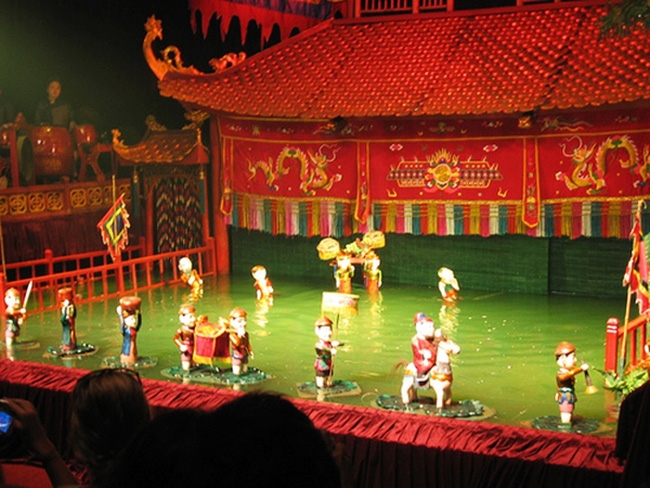
Water puppetry is a traditional cultural form that has long been associated with the Vietnamese people, especially in the Midlands and Northern Delta.
- Water puppetry was born more than 10 centuries ago in the Red River Delta. This type is often performed on holidays, village festivals, fun days, and New Year's, using puppets to perform tricks and plays on the water. Water puppetry is also considered a unique intangible cultural feature of the Vietnamese people.
- Water puppetry was born with wet rice civilization but was formed and developed during the Ly Dynasty (1010 - 1225). Over time, the art of water puppetry was passed down from generation to generation, gradually becoming an elegant hobby of Vietnamese people during festivals.
2. Development History Vietnamese Water Puppetry
Regarding the development schedule of Water Puppet, we can summarize some main stages as follows:
– Ly and Tran Dynasties (XI to XIV centuries): Water Puppet art thrived, performed in the royal court as a means of entertainment for kings as well as foreign emissaries.
– Le, Tay Son, and Nguyen dynasties (XV - XIX centuries): Although Water Puppet art was not performed in the royal court, it continued to develop with many unique creations and sophisticated techniques in people's lives. cultural and social activities. Water Puppet Show during this time absorbed the arts of Cheo and Tuong and added many lyrics and dialogues.
– Resistance war against the French (second half of the 19th century to early 20th century): in the context of the country's chaos, the Nguyen Dynasty sold out the country, and Water Puppet was considered a fun entertainment to attract customers. However, this type of art still exists in society and in the thoughts of patriotic Confucian scholars at that time.
– After the August Revolution (1945) to the second resistance war against the French (1954): Water puppetry gradually disappeared when the invading enemy destroyed cultural heritage, and the peaceful life of the people fell apart. People across the country rose up to fight for national independence
– March 1956: Uncle Ho issued a directive to establish Vietnam's professional puppetry industry, with the desire 'to have a professional puppetry troupe to give children more joy and laughter'. Water Puppet Show also developed from there, escaped from the villages, and became widely popular among the people of the country.
– Resistance War against America (1955-1975): The whole country fell into a difficult period of fighting, the development of water puppetry slowed down but still continued.
– Since 1984: Vietnamese water puppetry has been performed in many places around the world and has become increasingly widely known to this day, affirming traditional values and national identity.
3. Instrument – Form of performance
- Water puppetry is a traditional Vietnamese folk performing art form, using puppets made of wood, bamboo, etc. to perform on a water stage. The puppets are controlled by strings, placed on small boats, and performed under the dim lights of the stage.
- Water puppet performance tools include:
* Stage: Water puppet stages are usually made of wood, rectangular or circular, placed under the water. The stage is divided into two parts, the upper part is where the puppets perform, and the lower part is where the actors control the puppets.
* Puppets: Water puppets are usually made of wood, bamboo, etc., ranging in size from a few dozen centimeters to several meters. The puppets are painted in bright colors, meticulously decorated, and have moving parts attached with strings or bamboo sticks.
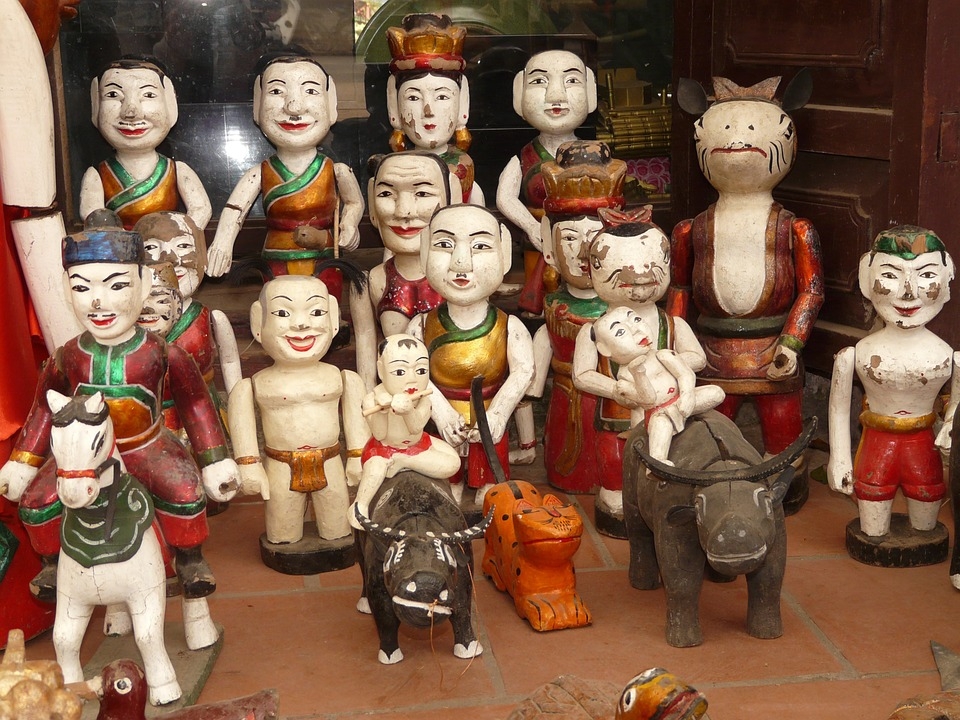
- : The control wire is used to control the movements of the puppet. Control wires are attached to the puppet's moving parts, which are hidden underwater and controlled by the actors.
* Musical instrument
Musical instruments used in water puppetry include drums, trumpets, monochords, etc. Musical instruments help create a vibrant and attractive atmosphere for the performance.
Musical instruments in water puppetry are used to accompany songs and dances, as well as to create various sound effects.
* Lighting: Lighting is used to create effects for the performance. Light is often used to illuminate the puppets, creating a shimmering, magical effect for the stage.
Water puppet performance tools are important factors contributing to the success of this art form.
- Water puppet performance is divided into two main parts:
* Performance of puppets: This is the main part of the water puppet show, including activities of daily life, and characters in fairy tales, myths,...
* Music part: The music part is used to accompany songs and dances, as well as to create various sound effects.
Water puppet shows are often held on holidays, festivals, happy days, New Year's Day, etc. The performance usually takes place in the evening, under the dim lights of the stage, creating a dramatic effect. shimmering.
The water puppets are controlled by water puppeteers. Water puppeteers are usually experienced people with skillful puppet control skills.

4. Characteristics and Program show
-
“Chú Tễu” – The Soul of the Water Puppetry Art
For anyone who has seen a water puppet show, “Chú Tễu” is a familiar character. He appears to his audience as a gentle person, who has one childlike smile, a young farmer with one golden loincloth, on the stage. He participates in every play as a narrator. He is responsible for all the introduction, ending, and narration throughout the whole story of the show.
He is also able to show sympathy and call for it in the tragic stories presented on the water stage. His sense of humor, his smile, and his voice are important to the show. Though “Tễu” is not a character contributing directly to any story told on the stage, his role is crucial, and he is loved by thousands of viewers.
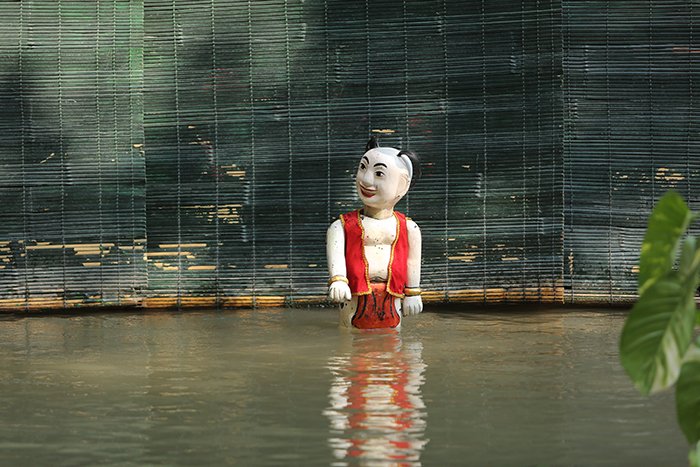
-
Buffalo Fighting
This is also known as the Buffalo Fighting Festival. The festival is one of the oldest folklore festivals, and it is held once a year in many locales. This is a festival associated with water god worship and sacrifices. The festival is held so that people can pray for prosperity and happiness in their lives.
In each festival, a fierce battle between two muscular and brave buffalos is presented. The reward will be given to the owner of the buffalo that won the contest. The festival not only brings joy but also shows the chivalry spirit of Vietnamese people.
-
Boat Racing
The boat has been associated with Vietnamese daily life, customs and festivals from ancient times to the present by our fathers. Boat racing is a traditional activity in the locality near the river, notably seen in the Red River and Mekong River Delta, often held during seasonal festivals or holidays, most significantly Tet.
This is not only a sport to show strength, but also a type of culture and belief that contains humanistic meaning, praying for the sun and the rain, imminent peace, and a life of no poverty and disease.
-
Fox fishing to catch the ducks
A farmer husband and wife herding ducks – what a peaceful and familiar scene of a Vietnamese village! Suddenly a good fox appeared from out of nowhere. The fox swam and chased, grabbed the duck, then got into the bushes, quickly climbed the tree so that it could hide from the husband and wife.
It’s such a clever fox that can both swim and climb up a tree to hide itself. This is considered as a trick of water puppetry. Many people raised the question of how the puppeteers can control their fox to climb up on a tree and this simple but interesting story has been attracting thousands of viewers in many years.
-
Phoneix – Dragon Dance
- Lan, or known as Unicorn, is one of the four noble symbols in the belief of Vietnamese – Lan, Li, Quy Phuong. In their religion, they believe that whenever a unicorn appears, there would be a Saint coming to help people overcome the poverty and obstacles in life as well as give them a life of happiness and peace. That’s why Unicorn is considered a stroke of good luck. In the puppet shows, “Múa Lân” is often about the fight of two Unicorns, which is so intensive and magnificent. However, the vibe that this performance brings to viewers is dynamic, astonishing, and fascinating.
- “Phuong” is also one of the symbols – “Lan, Li, Quy, Phuong”. In English, people can also call this as Phoenix. Phoenix in Asian belief often represents strength, nobility, and eternal love of couples. Especially in water puppet shows, Phoenix is featured incredibly with the most vivid colors and the most beautiful feathers. There are different stories about Phoenix, but in general, all of them indicate Phoenix’s meaning of love, eternity, nobility, and sometimes strength. The stories also express people’s wish for one true love in their lives.
5. Where the place You can see the Water Puppet Show
- In Ho Chi Minh City: Golden Dragon Theater, 55B Nguyen Thi Minh Khai Street, Ben Thanh Ward, District 1, Ho Chi Minh City.

- In Ha Noi: Thang Long Theater, 57B Đinh Tien Hoang Street, Hang Bac Ward, Hoan Kiem District , Ha Noi
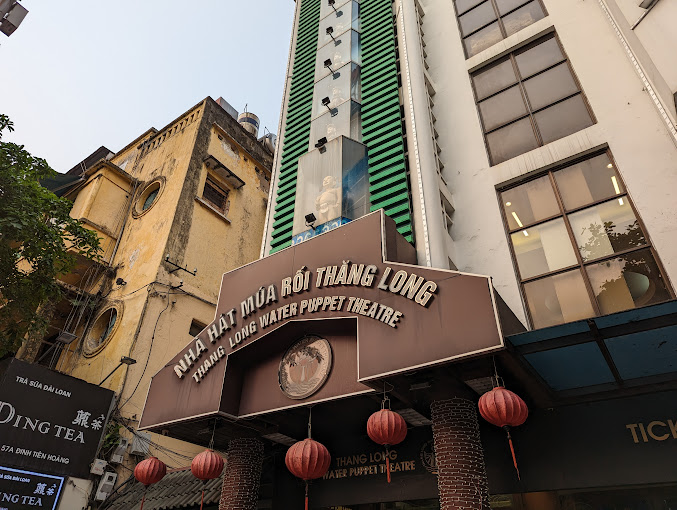
* Essential Formation :
- The price ticket: is 300.000 VNĐ ( Golden Dragon Theater )
- Time: 6:30p.m every day ( during 45 minutes )
You can buy Ticket on @Vietcruise tours or buy ticket dirirect to theater
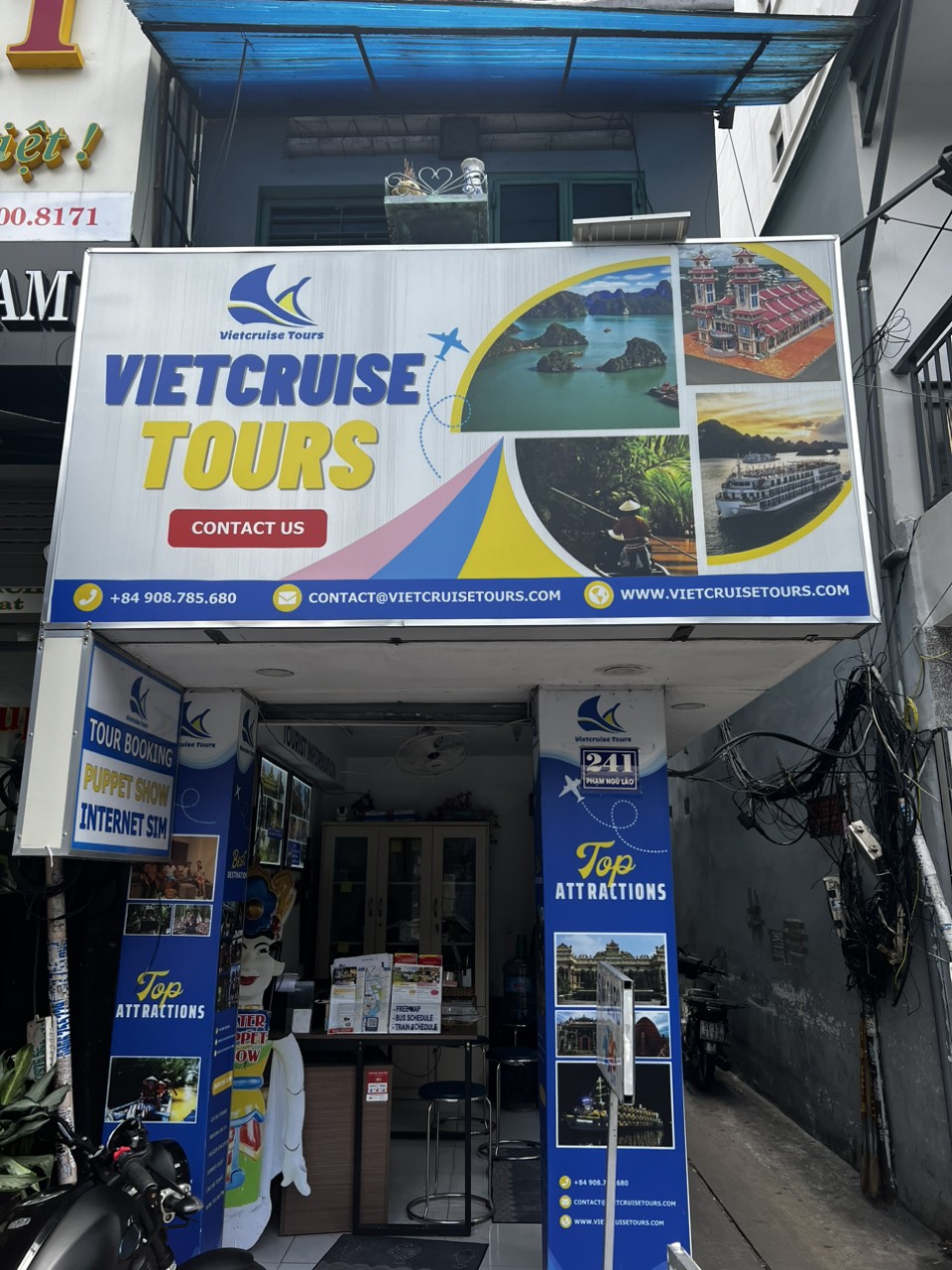

CONTACT US:
*Address:
- 2 Paris Commune, Ben Nghe, District 1
- 241 Pham Ngu Lao St, Pham Ngu Lao Ward, District 1
*Website: https://vietcruisetours.com/
*Hotline/Whatsapp: +84 908.785.680
*Email: contact@vietcruisetours.com